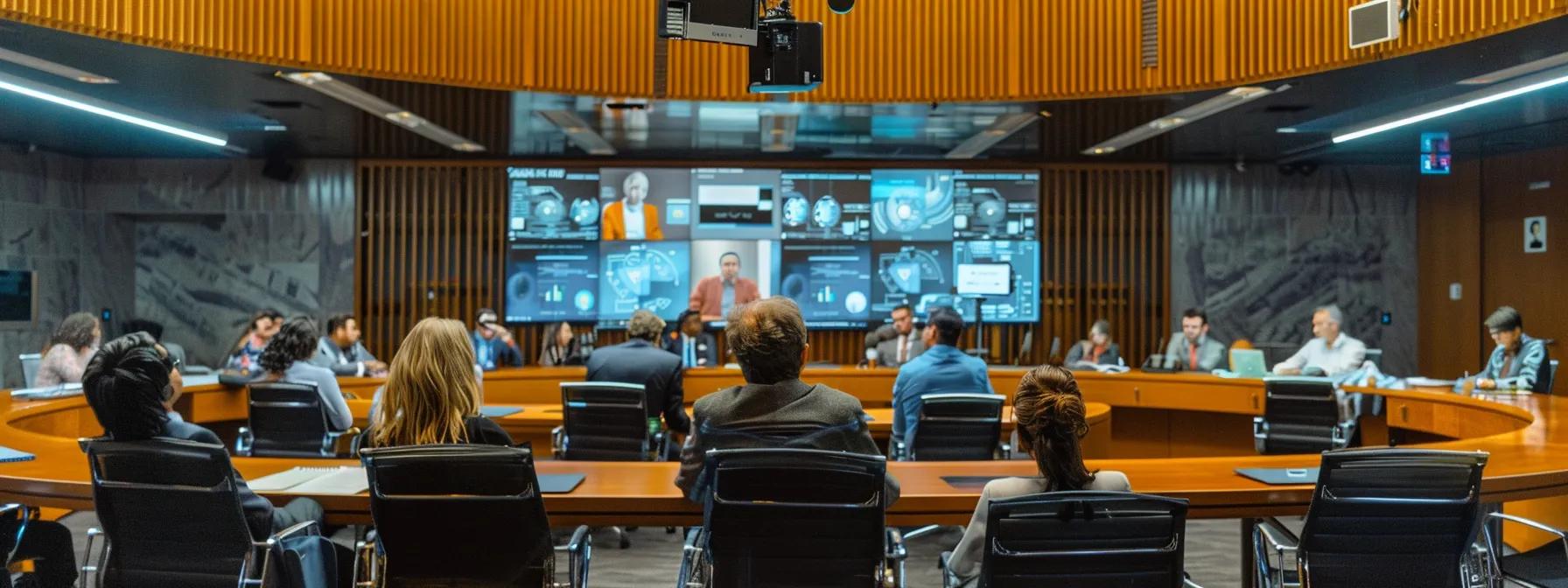
Achieving Compliance for SMBs: Focus on CMMC, HIPAA, NIST
In today’s complex regulatory environment, small and mid-sized businesses must navigate cybersecurity and data protection standards. Compliance with frameworks such as CMMC, HIPAA, and NIST is crucial for avoiding penalties, protecting sensitive information, and building client trust. This article outlines condensed guidelines, practical assessments, and strategic measures for SMBs to meet compliance requirements, covering key frameworks, audit preparation, daily integration, and continuous monitoring.
Understand CMMC Compliance Requirements for Small Businesses
CMMC is essential for securing sensitive information in the defense supply chain. It provides tiered maturity levels that help SMBs align their IT practices with regulated expectations.
Identify Key CMMC Levels and Their Requirements
CMMC is divided into levels that range from basic cybersecurity hygiene (e.g., password management, antivirus software) to advanced controls (e.g., multifactor authentication, continuous monitoring). These tiered controls enable businesses to identify where their current practices fall short and what upgrades are required.
Assess Your Organization’s Current Compliance Status
A thorough self-assessment—using checklists based on CMMC and NIST guidelines—is the first step. This assessment should cover vulnerability scanning, risk analysis, and a review of internal security logs and past audits. External consultants can provide unbiased perspectives and identify gaps.
Develop a CMMC Compliance Roadmap
A clear compliance roadmap outlines actionable targets, resource allocation, and milestones. For example, an SMB may plan to upgrade encryption protocols over three months and schedule quarterly audits. The roadmap should include employee training, IT upgrades, and regular policy reviews.
Prepare for CMMC Audits and Assessments
Preparation goes beyond document collection; it involves simulating audits and training staff on regulatory expectations. Regular internal reviews, supported by automated compliance tools, help catch gaps early and drive improvements in audit performance.
Integrate CMMC Standards Into Daily Operations
Embedding security into daily operations—through updated software, encryption, and consistent role-based access controls—ensures that standards are maintained continuously. Automation and regular staff training minimize human error and reinforce security practices.
Monitor Changes in CMMC Regulations Regularly
Since CMMC regulations evolve with emerging cybersecurity threats, SMBs must continually monitor updates. A proactive approach using dedicated teams, industry bulletins, and compliance software keeps protocols current and audit-ready.
Navigate HIPAA Compliance for SMBs in Healthcare

HIPAA compliance is critical for SMBs in healthcare. Protecting patient data requires strict adherence to privacy and security standards.
Review HIPAA Privacy and Security Rules for Businesses
HIPAA sets stringent guidelines for the protection of patient health information (PHI). Privacy rules govern data usage while security rules mandate technical and physical safeguards such as encryption and secure user authentication.
Conduct a Risk Assessment to Identify Vulnerabilities
Conducting comprehensive risk assessments helps identify vulnerabilities like unauthorized access or data breaches. This analysis, which should consider internal systems and external cyber threats, is vital for effective risk mitigation.
Implement Necessary Policies and Procedures
Once risks are identified, businesses must implement targeted policies such as access management, regular software updates, and encryption standards. Clearly defined procedures for incident response and thorough documentation are essential for demonstrating compliance.
Train Employees on HIPAA Compliance Best Practices
Regular training ensures that all employees understand the proper handling of PHI, including secure password practices and recognizing phishing attempts. A well-informed team reduces the possibility of breaches and maintains a culture of compliance.
Document Compliance Efforts and Maintain Records
Accurate documentation of risk assessments, policy updates, and training sessions is critical during audits. Digitizing records with compliance management tools ensures secure storage and easy retrieval of information.
Stay Informed About HIPAA Updates and Changes
Keeping updated with HIPAA revisions through official channels and integrating real-time alerts into internal systems ensures that policies remain current and effective in protecting patient data.
Implement NIST Framework for Security Compliance
The NIST Cybersecurity Framework offers a structured approach to managing IT security and reducing vulnerabilities.
Familiarize Yourself With NIST Cybersecurity Framework
NIST consists of five core functions: Identify, Protect, Detect, Respond, and Recover. These functions guide SMBs in organizing their security programs, ensuring that every element from asset inventory to incident response is addressed.
Assess Current Security Practices Against NIST Standards
SMBs should evaluate their existing security measures—such as physical security, device management, and network monitoring—against NIST standards. Identifying gaps via a structured risk matrix is key to understanding areas for improvement.
Prioritize Risk Management Strategies and Implementation
After assessment, prioritize risks based on severity and allocate resources accordingly. Implementing multi-layered defenses and enhanced detection mechanisms ensures that both short-term and long-term security goals are met efficiently.
Create an Incident Response Plan Aligned With NIST
A robust incident response plan (IRP) details the steps for detecting, reporting, and mitigating security incidents. Regular testing and updating of the IRP ensure that the organization is prepared to respond effectively, minimizing damage and recovery time.
Review and Update Security Policies Regularly
Regular updates to security policies are necessary to address evolving cyber threats. Soliciting staff feedback and monitoring new vulnerabilities help ensure that security practices remain aligned with NIST standards.
Engage With NIST Resources and Community for Support
Participation in NIST forums and training sessions provides valuable insights into best practices. Industry collaboration helps SMBs stay current with evolving compliance strategies and reinforces a commitment to continuous improvement.
Coordinate Compliance Efforts Across Different Regulations

Streamlining compliance across CMMC, HIPAA, and NIST reduces redundancy and optimizes limited resources for SMBs.
Map Out Overlapping Requirements of CMMC, HIPAA, NIST
Identifying shared requirements such as access controls, incident response, and risk management is the first step. A mapping document that details similar mandates across frameworks simplifies the overall compliance process.
Align Policies to Fulfill Multiple Compliance Standards
Harmonizing policies enables organizations to address overlapping requirements in one unified strategy. A single access management policy, for example, can satisfy elements of HIPAA, CMMC, and NIST simultaneously.
Designate Compliance Officers for Coordination Efforts
Designating dedicated compliance personnel ensures focused oversight. These officers coordinate efforts across departments, manage documentation, and interact with external auditors to uphold high security standards.
Use Technology Solutions for Compliance Management
Automated tools help manage the complexity of multiple regulations by consolidating data, tracking policy adherence, and generating audit trails. These solutions reduce manual workloads and increase transparency.
Set Up Regular Compliance Reviews and Meetings
Scheduled reviews and stakeholder meetings allow organizations to adjust to regulatory changes quickly. Continuous dialogue among IT, legal, and HR teams helps preempt potential compliance issues.
Create a Culture of Compliance Across the Organization
A strong compliance culture involves regular training, open discussions, and visible leadership support. When every employee understands their role, the organization as a whole is better equipped to safeguard data.
Leverage Training and Resources for Compliance Success
Investing in ongoing training and using external resources are vital for long-term compliance sustainability.
Identify Key Training Programs for Staff Development
SMBs should select training programs that cover technical, administrative, and operational aspects of compliance. Courses on document handling and incident reporting are critical for skill development.
Utilize Online Resources for Compliance Education
Webinars, white papers, and industry forums provide up-to-date insights into cybersecurity best practices. Official publications from NIST and HIPAA offer reliable guidance for continuous learning.
Engage Experts for Workshops and Consultations
Consulting with specialized experts can fill knowledge gaps and provide tailored strategies for overcoming compliance challenges. Regular expert sessions ensure the business stays proactive.
Assess Training Effectiveness and Adapt as Necessary
Periodic evaluations of training programs help determine their impact. Adjusting materials and incorporating feedback improves overall effectiveness and maintains high competency levels.
Foster a Compliance-Oriented Workplace Environment
Encouraging open communication and recognizing compliance achievements fosters a supportive environment. A proactive culture not only reduces risks but also improves overall efficiency.
Encourage Continuous Learning and Improvement
Promoting ongoing education—through industry journals and conference participation—ensures that the organization remains resilient and adaptable to new regulatory challenges.
Monitor Compliance Progress and Reporting Strategies

Monitoring progress and establishing reporting systems are essential for sustained regulatory adherence.
Establish Metrics for Compliance Assessment
Clear, quantifiable metrics—such as audit pass rates, response times, and training completion—help track progress and identify improvement areas.
Implement Regular Audits and Compliance Checks
Conducting internal and external audits uncovers vulnerabilities and discrepancies. Automated monitoring facilitates prompt corrective actions and continuous protocol refinement.
Create Clear Reporting Channels for Non-Compliance Issues
Transparent reporting frameworks, including dedicated email addresses and hotlines, enable swift detection and resolution of issues, thereby reducing risks.
Utilize Compliance Management Tools for Tracking
Modern tools that provide real-time dashboards and audit trails streamline compliance management and enhance transparency during audits.
Share Compliance Status With Stakeholders Transparently
Regular updates to internal teams, board members, and external auditors build trust and ensure accountability. Open reporting reinforces the organization’s commitment to data protection.
Prepare for Regulatory Feedback and Adjust Accordingly
Constructive feedback from audits should be promptly addressed. A structured response process enables quick policy adjustments and continuous improvement.
Frequently Asked Questions
Q: What is CMMC compliance and why is it important for SMBs? A: CMMC establishes cybersecurity standards for defense contractors, helping SMBs protect sensitive data and build client trust.
Q: How can SMBs meet HIPAA requirements for patient data protection? A: By conducting thorough risk assessments, implementing encryption and access controls, and providing ongoing staff training, SMBs can safeguard patient data while ensuring transparency.
Q: What does the NIST Cybersecurity Framework focus on? A: It emphasizes risk management through its core functions—Identify, Protect, Detect, Respond, and Recover—to strengthen overall cybersecurity posture.
Q: How can technology solutions aid in compliance management? A: Automated tools help streamline risk assessments, policy tracking, and audit documentation, enabling efficient and transparent compliance monitoring.
Q: What role do employee trainings play in regulatory compliance? A: Regular training ensures that staff understand regulatory requirements and best practices, thereby reducing risks and strengthening security.
Final Thoughts
Small and mid-sized businesses must integrate compliance measures for CMMC, HIPAA, and NIST into daily operations. By understanding each framework, assessing current practices, and setting a clear roadmap, companies can secure data and bolster client trust. Continuous monitoring, transparent reporting, and regular training ensure ongoing compliance and audit readiness, building a resilient security culture essential for long-term success.




